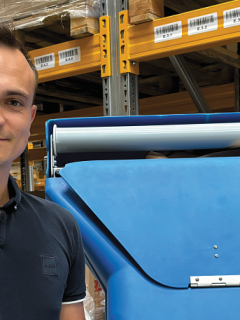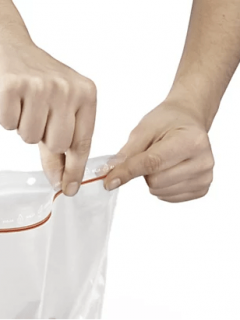Sending a parcel to Norway doesn’t have to be complicated if you know how to go about it. Whether you’re planning to send a gift, documents or a parcel of personal items, it’s crucial to know the basic steps to make the whole process easier. So check out what you can send to Norway and what the shipping costs are. In this article, we will also give you tips on how to pack your parcel properly so that it makes the long journey in good condition.
Parcel to Norway – what can you send?
Not all items can be sent in a parcel, due to the fact that some are subject to certain restrictions. However, regulations vary from country to country. What is the situation with parcels to Norway?
- Permitted items: clothing, books, electronics and other standard items are usually hassle-free to send.
- Restricted items: this category includes especially food products, some of which may require special permits. Most, however, you will send without any hassle. Nevertheless, it is always worth checking the specific regulations and ensuring that they are packaged properly. Find out how to send and pack food.
- Prohibited items: tobacco products, alcohol, explosives and some medicines are prohibited from shipping. Make sure your package does not contain these items to avoid problems during customs clearance.
What is the best way to send a parcel to Norway?
The choice of method for sending a parcel to Norway should be tailored to your individual needs and preferences. You can opt for one of the international courier services, such as FedEx, UPS or DHL, which offer a variety of delivery options – from standard, ideal for less urgent parcels, to express, for fast and efficient delivery.
If you prefer a more local solution, it’s worth considering the Polish Post Office, which handles parcels to Norway and can be a favourable option for less urgent parcels (parcels generally take longer to arrive than with a courier service).
What about sending a parcel in a parcel machine? Although parcel machines are convenient and popular in Poland, they are less common in Norway. It will therefore prove more practical to use courier or postal services, which offer flexibility and convenience of collection.
How much does it cost to send a parcel to Norway?
Is it expensive to send a parcel to Norway? The final price depends on the delivery option you decide on, but also the size of the parcel. However, it will not be cheap. What costs should you be prepared for?
For example, shipping a parcel up to 1 kg via FedEx Economy is about 245 PLN, while using the express option offered by DHL costs more than 260 PLN. The cheapest will be shipping small items that you can send in an ecological envelope. The cost of a shipment in a standard envelope weighing up to 1 kg is approximately 185 zł.
It is worth remembering that the costs may vary depending on additional services, such as insurance or priority delivery. That’s why it’s worth comparing offers from different carriers to find the best option to suit your needs and budget.
Read also: How to send a letter abroad?
Sending a parcel to Norway – what should you keep in mind?
When sending a parcel to Norway, the first thing to remember is to secure it properly. It is best to use sturdy shipping cartons and protective materials to protect the contents from damage during transport. It is advisable to seal the parcel with special packaging tapesto ensure that the contents cannot be opened during shipment. Electronics require special protection. If you want to send electronics in your parcel, please read our guide on how to protect electronic products.
And don’t forget the label – place it in a prominent place and check that it contains the recipient’s full details. In addition, carefully filling out the customs documents and attaching them to the parcel is extremely important. Make sure you comply with customs regulations to avoid any unpleasant surprises regarding prohibited or restricted items. Just in case, check import regulations before shipping.
In summary, shipping a parcel to Norway can be easy and hassle-free as long as you pay attention to key aspects of the process. Adhering to the regulations regarding the contents of the parcel, choosing the right delivery method, comparing costs and careful packaging and documentation are essential steps to ensure a smooth delivery.














